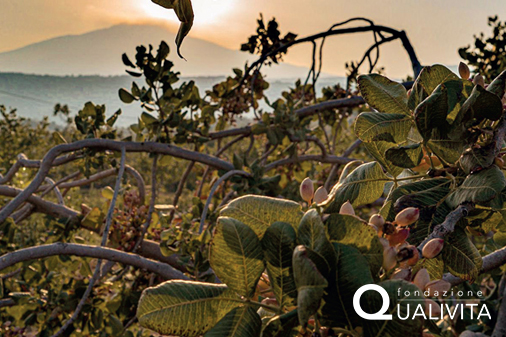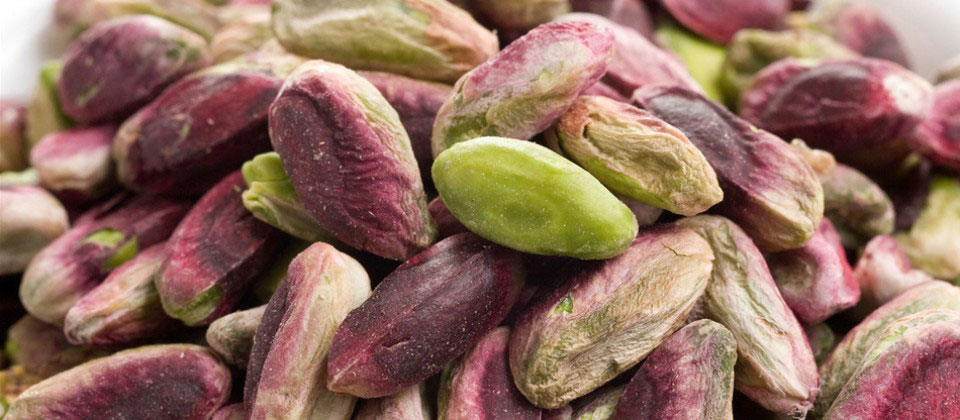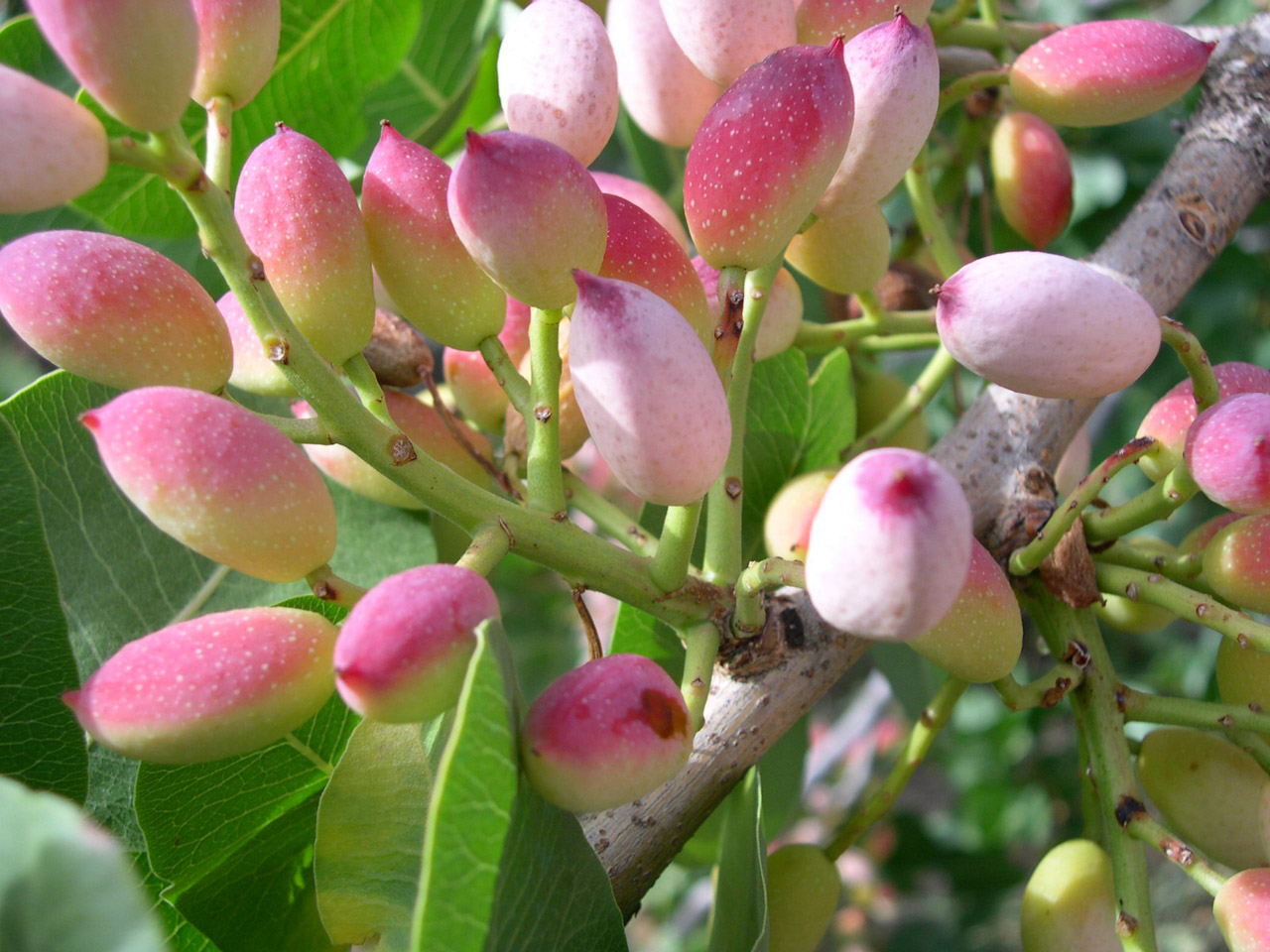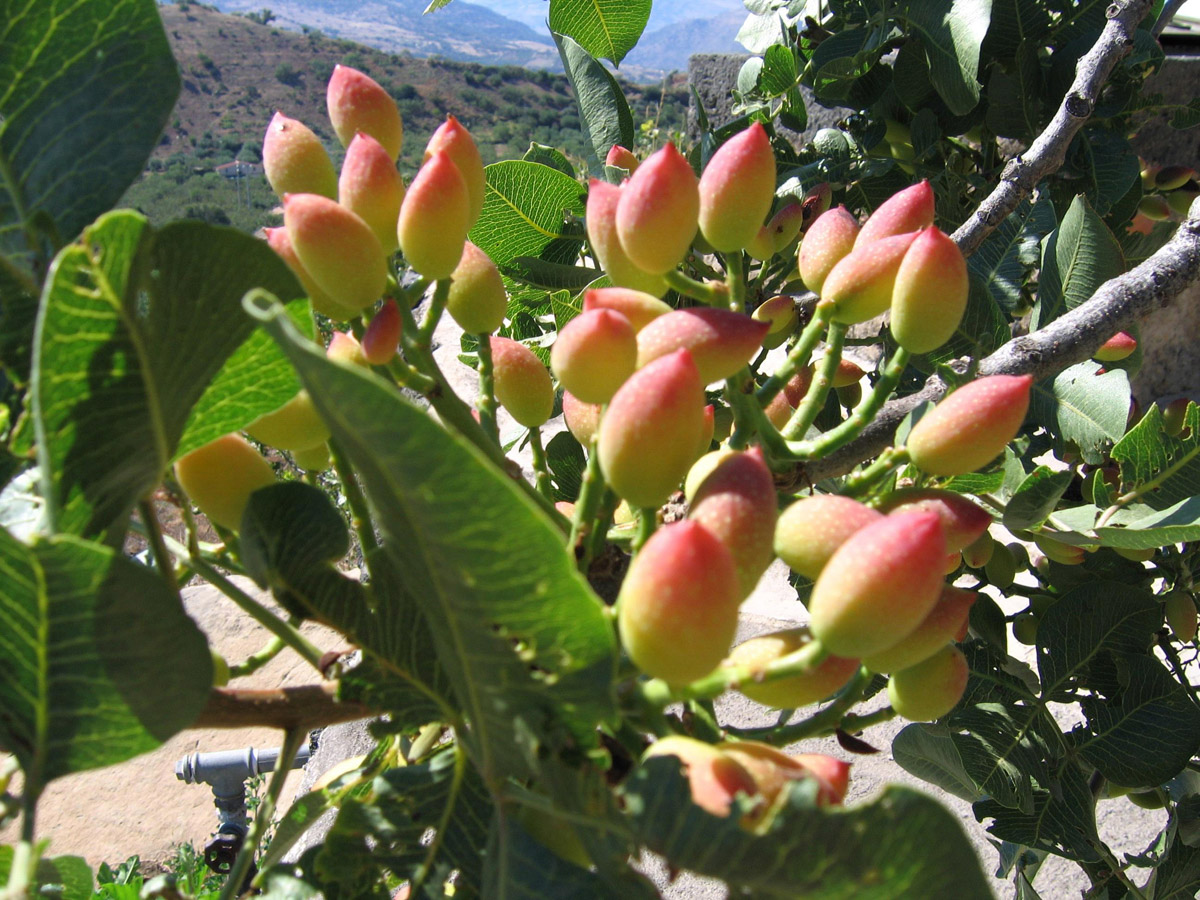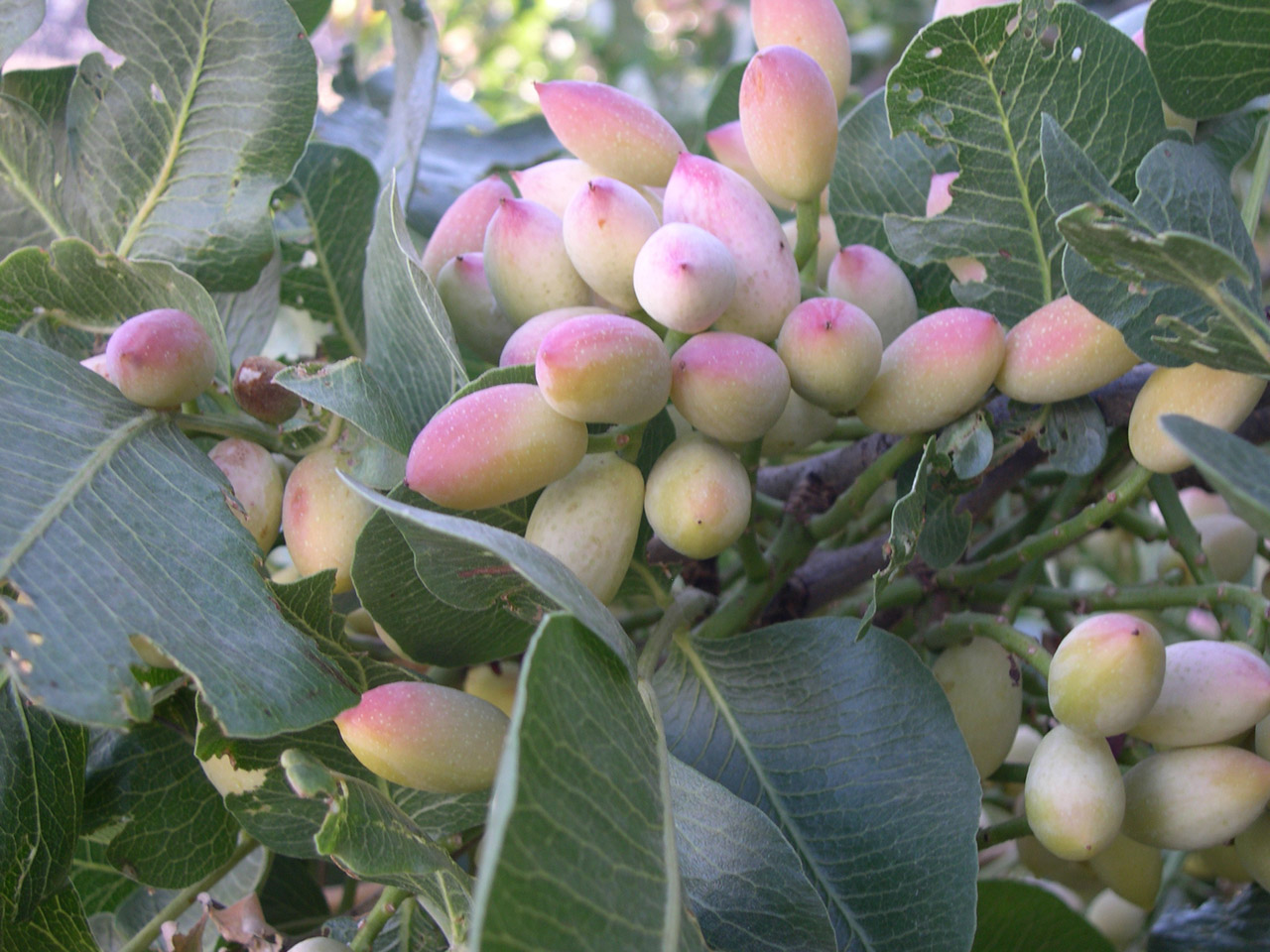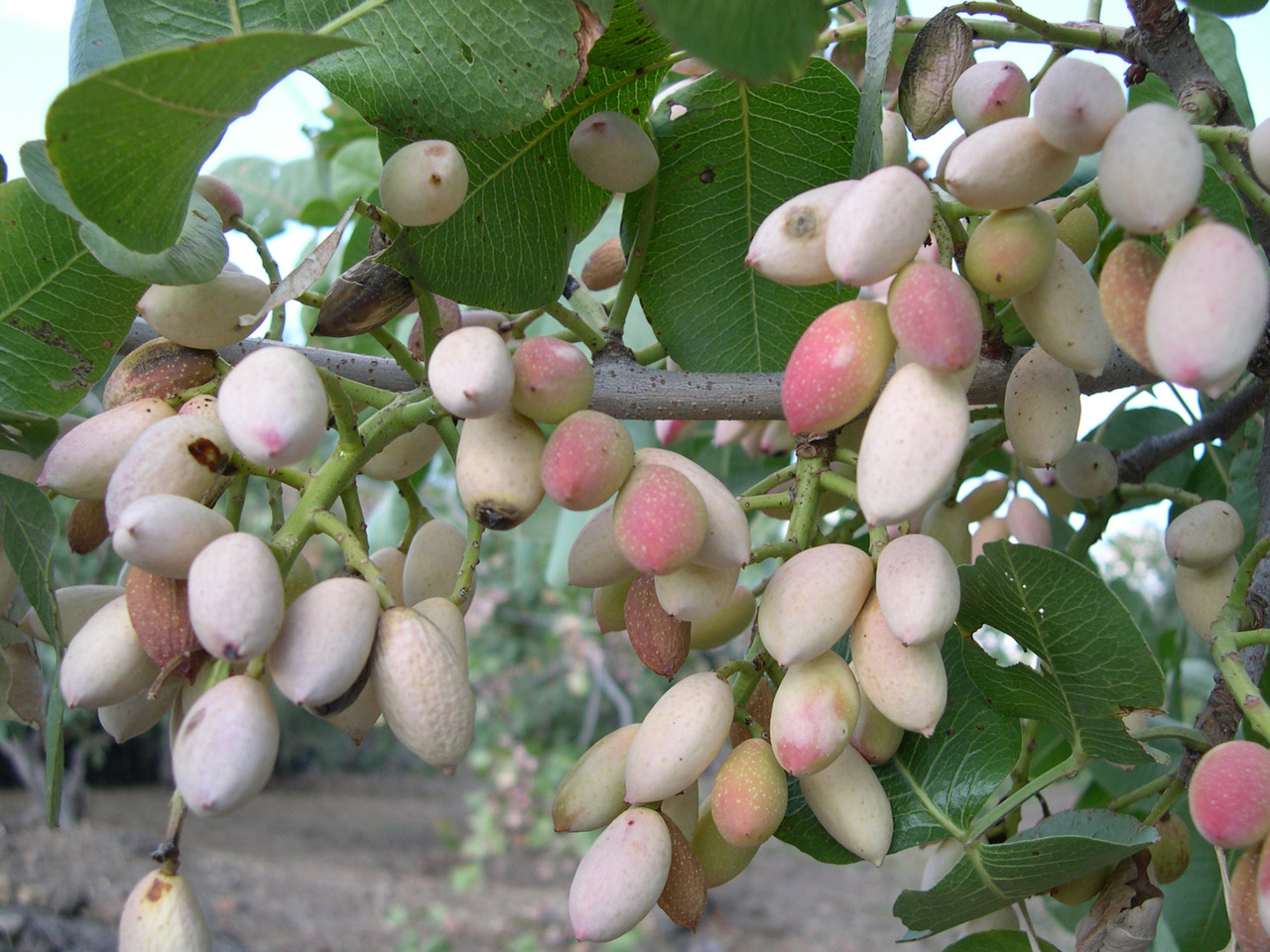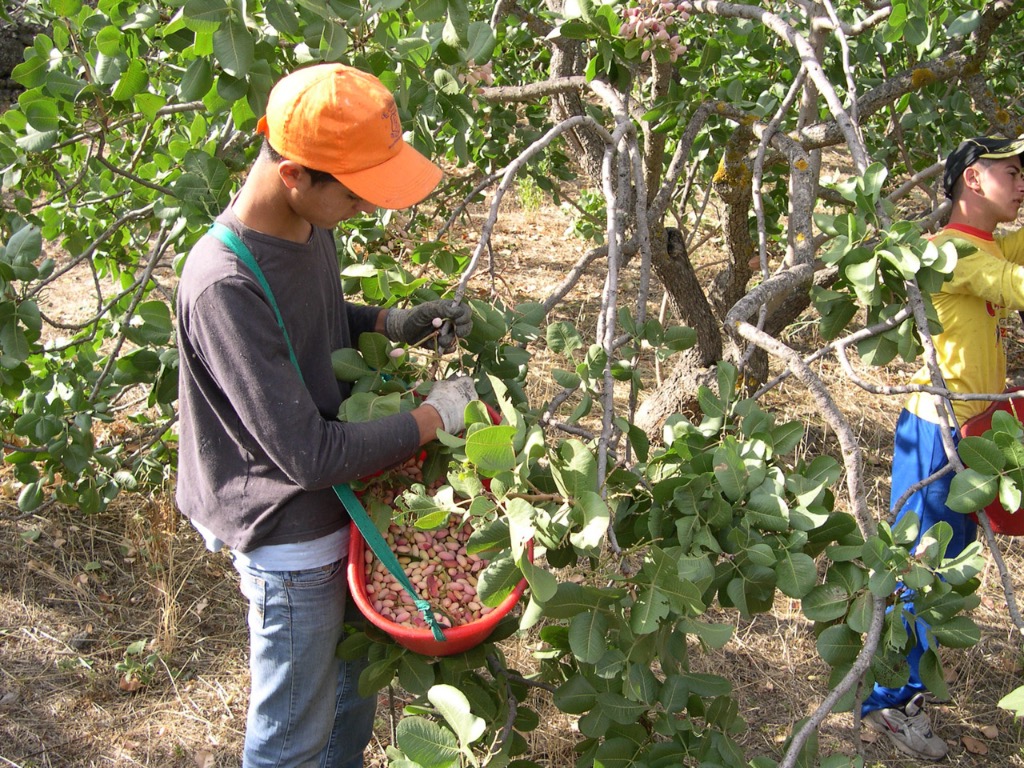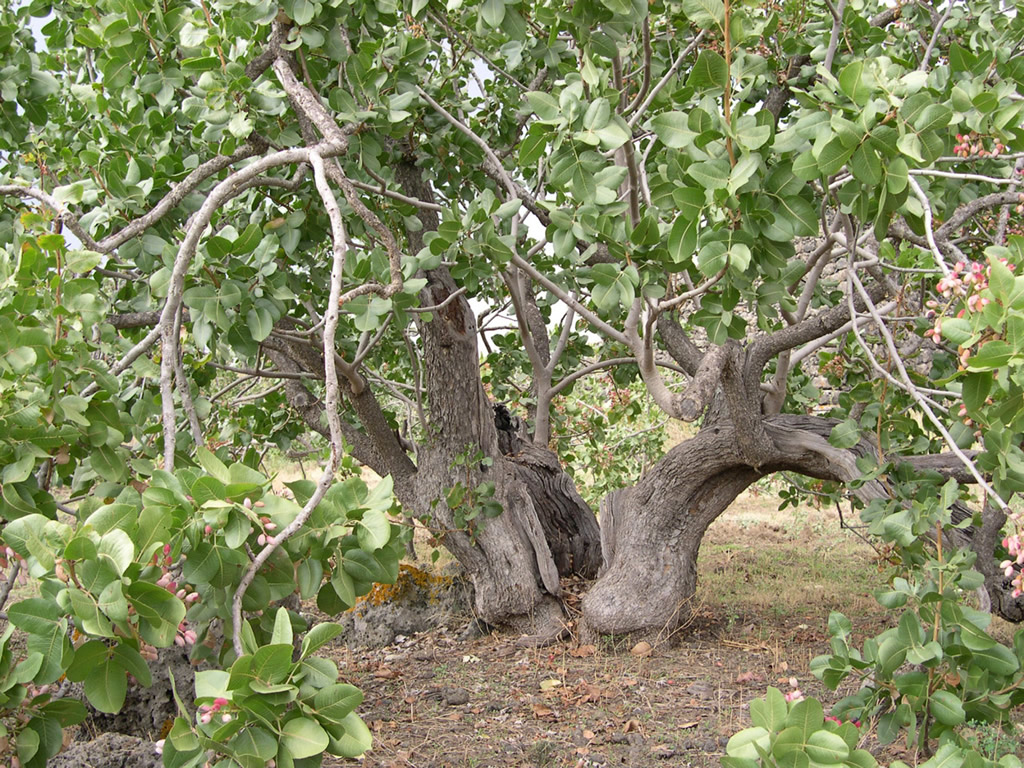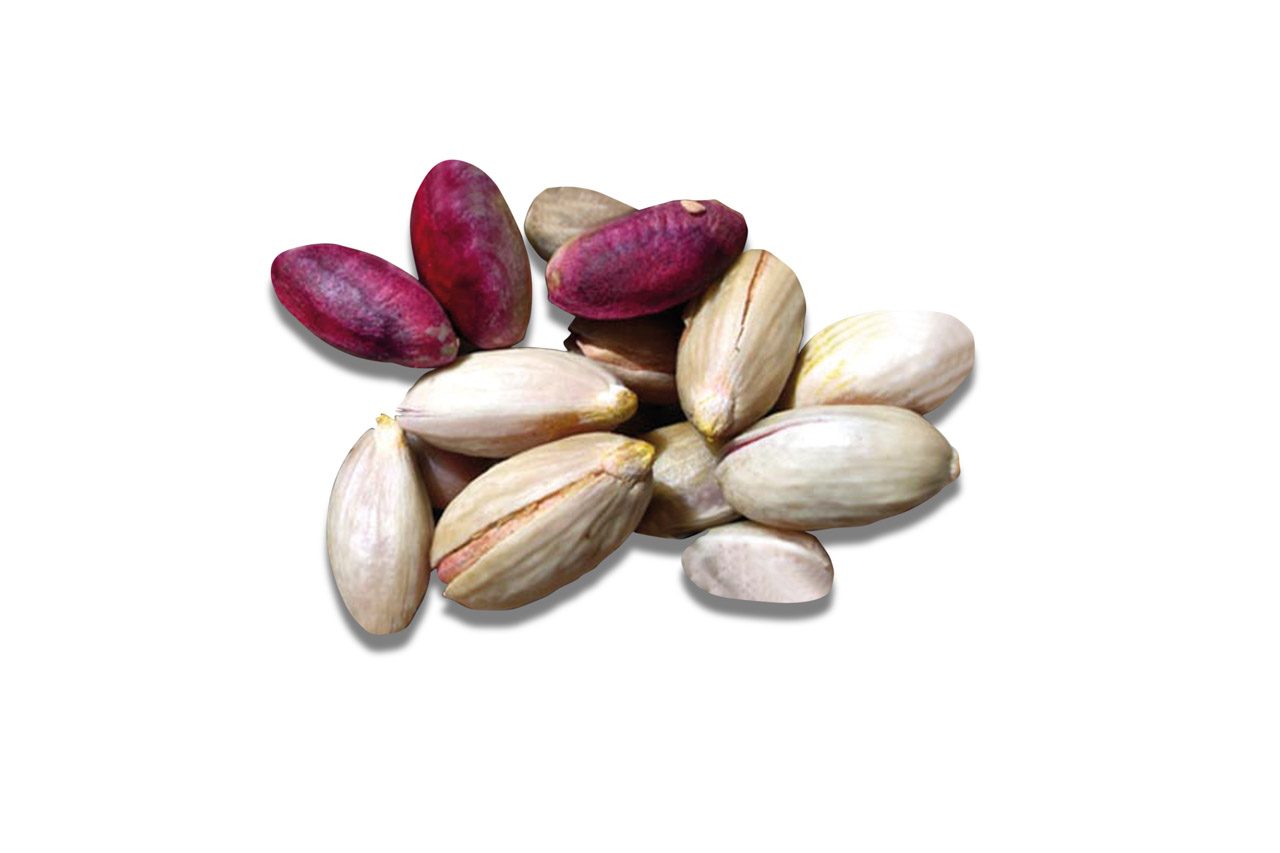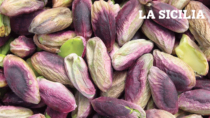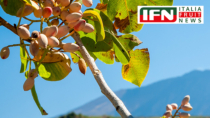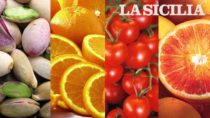Description
The Pistacchio Verde di Bronte PDO refers to the pistachio nut, with its shell, shelled or peeled, of plants belonging to the species Pistacia vera, deriving from the Napoletana cultivar (also known as Bianca or Nostrale).
Production Area
The production area of Pistacchio Verde di Bronte PDO is within the municipal areas of Bronte, Adrano and Biancavilla in the Province of Catania, in the Sicily region.
Production Method
The product is mostly grown in lava soil, an ideal substrate for growing turpentine trees, the common name given to the Pistacia terebinthus plant and the most important grafting support for the propagation of Pistacchio Verde di Bronte PDO. Pistachio groves can be specialised or associated with other types of plants, and the only permitted training methods are “shrub”, “open-vase” and “single-plant”. Harvesting is carried out by hand every two years, and generally takes place between August 20th and October 10th. The pistachio nuts must be hulled within 24 hours of harvesting: the edible part of the fruit is separated from the external, fibrous hull. The fruit are then dried in their shells at a temperature of 40-50 °C, until obtaining nuts with a residual humidity between 4 and 6%. Some of the pistachios are then shelled or peeled, removing the purple-pinkish skin by immersing the product in boiling water, after which they dried. These procedures can be carried out mechanically. The product can be stored for up to 24 months after the harvest; the dry pistachio nuts must be put in jute, paper or polythene bags.
Appearance and Flavour
Pistacchio Verde di Bronte PDO have a long and slightly flattened shape, and are about the size of an olive. The seed inside the shell is emerald green, covered with a thin ruby red skin. It has an extremely aromatic flavour.
History
The pistachio plant was imported to Sicily by Arabs during their domination in the 8th and 9th centuries. Its long life and resistance to bad atmospheric conditions allowed the pistachio plant to steadily settle in the volcanic soils that were difficult to cultivate - the so-called sciare - which characterise Bronte and the surrounding areas. Over the years it became the most important local crop in terms of both surface area and profit. The local population developed their tradition and wealth around the cultivation of pistachio plants, thanks to the hard work of the farmers, who passed down their knowledge on how to care for the lochi (the local name for pistachio tree groves, through the generations, contributing to the town of Bronte being named “pistachio city”.
Gastronomy
Pistacchio Verde di Bronte PDO should be kept in a cool, dry place. It can be eaten without cooking or processing, as a snack or with an aperitif, although thanks to its distinctive aroma and quality, it has always been a main ingredient in Sicilian confectionery products and cuisine in general. It is traditionally used by Bronte’s confectioners as a basic ingredient in ice-creams, pastries, creams and spirits, or to make the famous pistachio cake, a sponge cake filled with chocolate.
Marketing
The product is marketed as Pistacchio Verde di Bronte PDO. It is sold in its shell, shelled and peeled, finely chopped or semi-processed as pistachio flour or paste. It is packed in new packaging made from suitable materials.
Distinctive Features
Pistacchio Verde di Bronte PDO is neither roasted nor salted. In addition to its uniform green colour and strong aroma, it has many nutritional properties: it contains vitamin A and is rich in iron, phosphorus and monounsaturated fats, in particular palmitic acid, minimum 10%, and linoleic acid, minimum 15%, elements which help strengthen the body’s immune system and promote general well-being.





